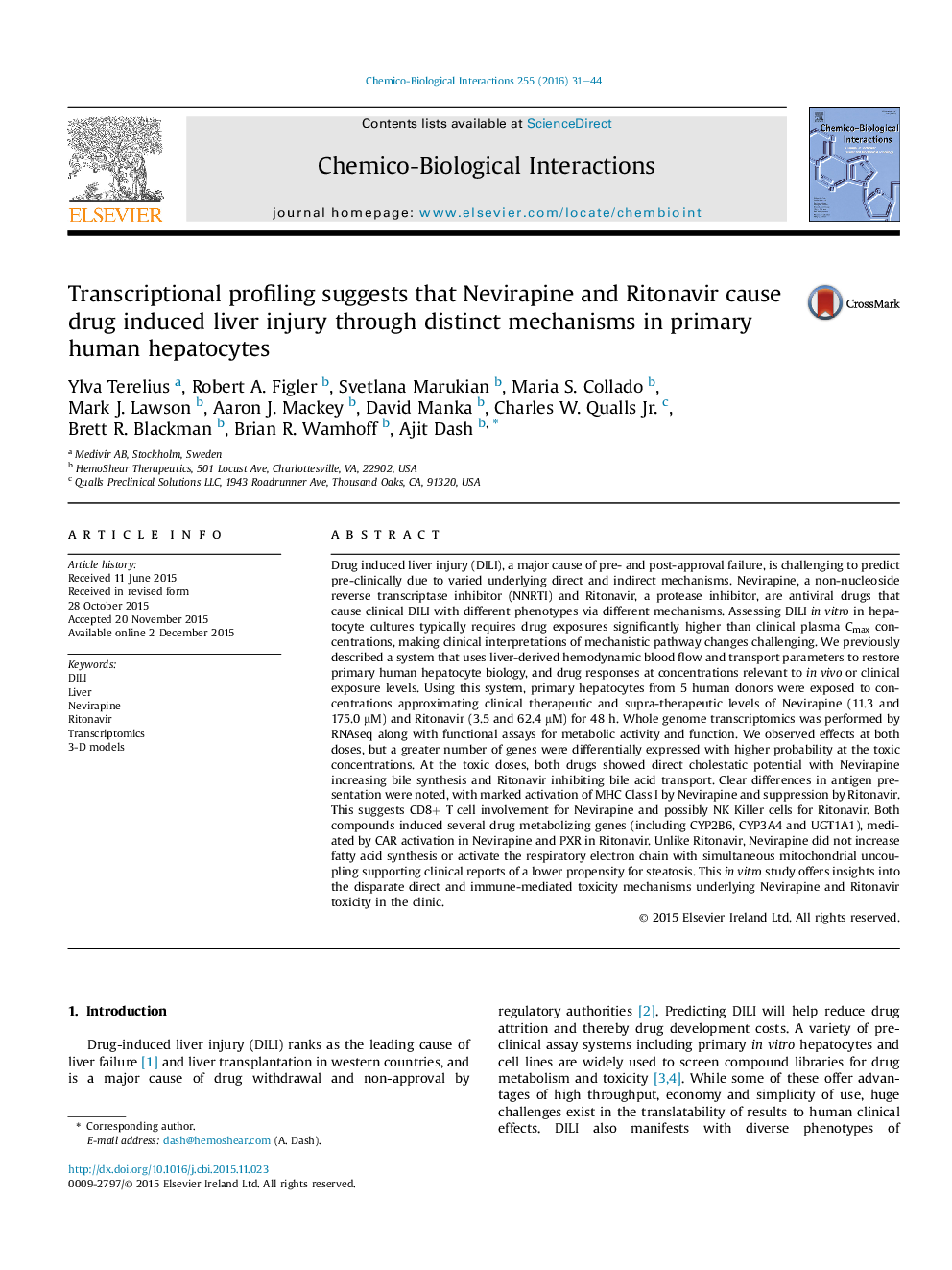| کد مقاله | کد نشریه | سال انتشار | مقاله انگلیسی | نسخه تمام متن |
|---|---|---|---|---|
| 2579912 | 1561586 | 2016 | 14 صفحه PDF | دانلود رایگان |

• Nevirapine and Ritonavir hepatotoxicity was profiled in an organotypic liver model.
• Data predict differences in MHC antigen presentation and downstream T-cell responses.
• Intracellular bile acid accumulation and cholestasis mechanisms are different.
• Drug metabolizing enzymes are regulated via different receptors (CAR vs. PXR).
• Lipid metabolism and respiratory chain effects suggest different steatotic potential.
Drug induced liver injury (DILI), a major cause of pre- and post-approval failure, is challenging to predict pre-clinically due to varied underlying direct and indirect mechanisms. Nevirapine, a non-nucleoside reverse transcriptase inhibitor (NNRTI) and Ritonavir, a protease inhibitor, are antiviral drugs that cause clinical DILI with different phenotypes via different mechanisms. Assessing DILI in vitro in hepatocyte cultures typically requires drug exposures significantly higher than clinical plasma Cmax concentrations, making clinical interpretations of mechanistic pathway changes challenging. We previously described a system that uses liver-derived hemodynamic blood flow and transport parameters to restore primary human hepatocyte biology, and drug responses at concentrations relevant to in vivo or clinical exposure levels. Using this system, primary hepatocytes from 5 human donors were exposed to concentrations approximating clinical therapeutic and supra-therapeutic levels of Nevirapine (11.3 and 175.0 μM) and Ritonavir (3.5 and 62.4 μM) for 48 h. Whole genome transcriptomics was performed by RNAseq along with functional assays for metabolic activity and function. We observed effects at both doses, but a greater number of genes were differentially expressed with higher probability at the toxic concentrations. At the toxic doses, both drugs showed direct cholestatic potential with Nevirapine increasing bile synthesis and Ritonavir inhibiting bile acid transport. Clear differences in antigen presentation were noted, with marked activation of MHC Class I by Nevirapine and suppression by Ritonavir. This suggests CD8+ T cell involvement for Nevirapine and possibly NK Killer cells for Ritonavir. Both compounds induced several drug metabolizing genes (including CYP2B6, CYP3A4 and UGT1A1), mediated by CAR activation in Nevirapine and PXR in Ritonavir. Unlike Ritonavir, Nevirapine did not increase fatty acid synthesis or activate the respiratory electron chain with simultaneous mitochondrial uncoupling supporting clinical reports of a lower propensity for steatosis. This in vitro study offers insights into the disparate direct and immune-mediated toxicity mechanisms underlying Nevirapine and Ritonavir toxicity in the clinic.
Journal: Chemico-Biological Interactions - Volume 255, 5 August 2016, Pages 31–44